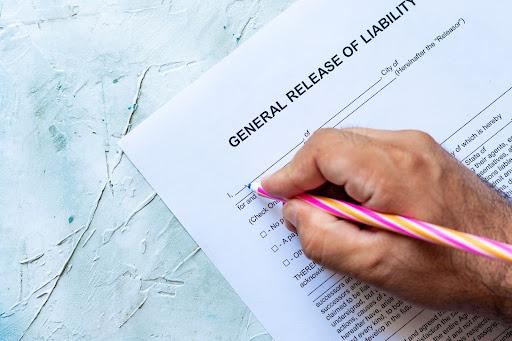What’s a personal injury release form?
Personal Injury - February 6, 2023
You’ve probably signed a personal injury release form at one time or another. For example, if you joined a gym, went to an amusement park, or participated in some other type of activity that could potentially be dangerous such as skydiving or riding a flyboard. You might still have legal recourse if you’ve signed a personal injury or liability release.
The Chicago personal injury attorneys with Horwitz, Horwitz & Associates would like to share some information on what a personal injury release form is, and what rights you have after you sign one.
If you’ve suffered an injury and would like to know how you can obtain rightful compensation, call (800) 985-1819 or contact us online for a free case evaluation.
What to know about a personal injury release form
Also known as a liability waiver, a personal injury release form states that you won’t blame a service provider if something happens and you’re hurt while using that service. In some instances, companies will try to avoid liability for many things, not only accidents, such as intentional harmful acts or other negligence committed by their employees.
Are there benefits of signing a personal injury release?
Companies see a personal injury release as protection from legal action. They believe these forms reduce the chances they’ll be sued, which, in turn, will reduce their legal costs. Those companies have several potential benefits, but signing one can sometimes affect your ability to file a lawsuit against them.
Can you still sue if you’re hurt after signing one?
More than likely, yes.
If the company was negligent and you suffered an injury as a result of that negligence, you’ll probably still be able to file a lawsuit – even if you signed a personal injury release form. Yes, a liability waiver is a legal contract, but Illinois courts routinely dismiss them.
One of the main reasons is that a personal injury release form must contain language that is explicit, clear, and concise. The vast majority of forms fail to meet those criteria. In some instances, they don’t contain enough details or specifics regarding the risks of using a service. In others, they’re so long and full of confusing legal jargon that the court will likely rule they’re too difficult for a reasonable person to understand.
Although you might still have an opportunity to sue, you also need to understand that there’s a chance the company could be able to use that form to its advantage. You might not have grounds to sue if you assumed the ordinary risks associated with the service.
For example, if you’re lifting weights in a gym and you tear a shoulder muscle, you probably won’t be able to sue because you assumed the risks associated with working out. Further, because your injury was caused by something you were doing, the gym won’t be held liable for your injury.
Compare this to a bolt coming loose on a squat rack which causes it to collapse and fall on you–that wouldn’t fall under the category of “ordinary risks” associated with exercising in a gym. You may be able to sue the gym for failing to maintain the equipment, and the manufacturer if the squat rack itself was defective.
Want to know more about personal injury forms? Speak with Horwitz, Horwitz & Associates today
Cases involving personal injury release forms aren’t always black and white — there can be a lot of complexities involved. The actions that caused your injury as well as the language of the liability release will be determining factors as to whether or not you’re entitled to substantial compensation.
The only way to know for sure is to speak with a Chicago personal injury attorney. If you would like a free review of your case from Horwitz, Horwitz & Associates, please don’t hesitate to contact us. Call (800) 985-1819 today to schedule your free consultation.



